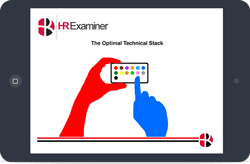Five LinkedIn Links

Here’s a set of links that recap the LinkedIn related changes in the HR ecosystem.
Five LinkedIn Links
LinkedIn are on a tear. The stock price is propping up the notion that Silicon Valley IPOs are still a good idea. The company is releasing a torrent of new features and functionality. It’s hard to find a coherent critique in the flow of commentary.
Here’s a set of links that recap the LinkedIn related changes in the HR ecosystem.
- Meet the New LinkedIn Profile: A Better Way to Connect and Build Relationships
This was the moment that LinkedIn fully embraced the social networking as traffic destination model. Without robust traffic and lots of interaction among members, LinkedIn’s revenue stream would remain completely tied to data. The profile improvements are the gateway to the LinkedIn advertising revenue stream. The new profile encourages a narrative approach to the presentation of career data. - The 2012 State of Volunteer Recruitment Address
Shari Ilsen from Volunteer Match highlights the fact that Interest now has more traffic than LinkedIn. This short piece focuses on visual recruiting using Interest, Integrate, and You Tube. See also The Visual Recruiting Superiority Effect - To the LinkedIn trainers, coaches and book writers …
The Recruiting unconference impresario, Bill Boorman weighs in on LinkedIn astonishing rate of change in recent months. “I can’t remember a time when LinkedIn has changed more significantly, and at such speed, largely without prior warning. The market respects our thought leaders and trainers, please stop for breath, give it time to shake out and start advising us again over issues like keywords or not. You will have our eternal gratitude if you can figure it out, and hold off the training in instruction until we have answers to the questions.” - Ranking the 100 Most InDemand Employers Using LinkedIn Data
This infographic from LinkedIn shows off their new stream of information products. This one is shaped by the same kind of analytics that drive the new LinkedIn Talent Brand Index. The tools would be more interesting if they measured something other than the universe as experienced within LinkedIn. - The Biggest Threat To LinkedIn: The Power Of Many, Not One
Today, there are a number of signs indicating that our most-valued professional networking is beginning to happen elsewhere, on a growing roster of sites not named LinkedIn. This TechCrunch article cites Jon Bischke of Entello and Natasha Lomas (of Tech Crunch) in support of the view that a monolithic professional networking site is unlikely to succeed in the long haul. Real social networking is both professional and regional. See also this piece on The Future of Recruiting which lobbies for a compensation offer as the solution to in baskets full of InMail spam. - Here’s LinkedIn’s Biggest Revenue Problem
Hint, they are particularly stuck in the US.
John Sumser
John Sumser is a principal analyst for HRExaminer, an independent analyst firm covering HR Technology and the intersection of people, tech, and work. John’s mix of experience over the course of his career gives him a broad and unique perspective on the industry. Like anyone trying to process a lot of information, he is two or three steps ahead in some areas and still learning about others. Sumser’s work includes deep research into the nooks and crannies of HR Technology to identify and explain rapidly evolving trends. Built on a foundation of engineering, design, and philosophy, John’s seeks to understand and advise clients on where their technology works best, for whom, and in what context. Each year, John examines the insides of hundreds of companies, their products, and ecosystems. He delivers vendor analysis by building the framework from which to deliver the critique. He is constantly connecting and making visible the front end of change. He can help you see the path of evolution and the risks on the journey. The HRExaminer is Sumser’s vehicle for understanding and explaining the inner workings of the industry. With three weekly podcasts, and written commentary, he covers emerging ideas, the state of the industry, and the executives who operate it.











